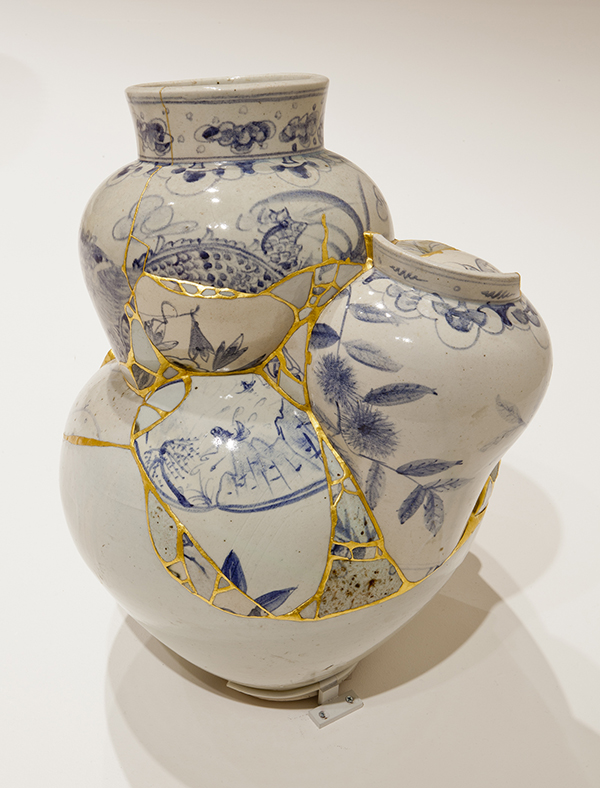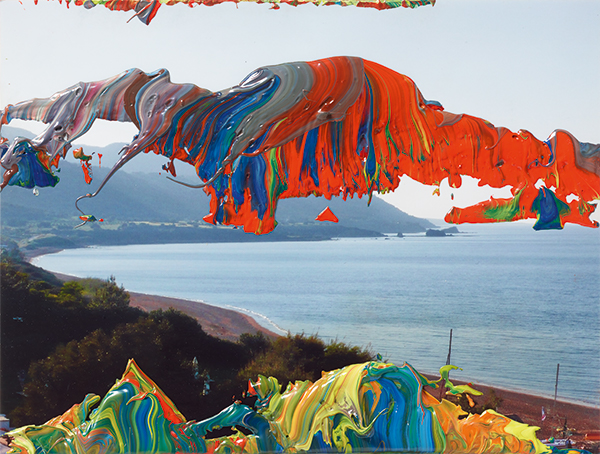Past Exhibitions

Monochrome Multitudes
September 22, 2022–January 8, 2023
This exhibition traces “the monochrome” as a fundamental if surprisingly expansive artistic practice.

Haegue Yang: Quasi-Legit
September 22, 2022–June 9, 2024
Haegue Yang’s newly commissioned artwork—the artist’s first large-scale installation in Chicago—dislodges venetian blinds from their typical function as window coverings to create a monumental white grid suspended in front of a soaring blue wall in the Smart Museum’s lobby.

Museum as Classroom
September 22, 2022–January 8, 2023
Organized by the Feitler Center for Academic Inquiry, this presentation features clusters of artworks that were selected for individual courses across disciplines at the University of Chicago—ranging from “Art and Feminism” to “Seeing Through Drawing.”

Unsettled Ground: Art and Environment from the Smart Museum Collection
March 22–June 26, 2022
How has the environment shaped artistic practice, and how can artistic form teach us to understand our local and planetary environment in new ways? Organized by the Feitler Center for Academic Inquiry, this exhibition speaks to a generative conversation between art and the environment across multiple scales of time and space.

Bob Thompson: This House Is Mine
February 15–May 15, 2022
Featuring more than 85 paintings and works on paper, This House Is Mine centers Bob Thompson’s brief but prolific transatlantic career within expansive art historical narratives and ongoing dialogues about the politics of representation, charting his enduring influence.

Porcelain: Material and Storytelling
February 15–March 6, 2022
Porcelain is an artistic medium as well as a material substance. It can be used to represent figures and to tell stories in two-dimensional and three-dimensional forms, and its own materiality can also be made into the subject of artistic expression.

Smart to the Core: Medium / Image
September 23–December 12, 2021
Presented as primary source material for the University of Chicago Core sequence "Media Aesthetics," this exhibition seeks to interrogate the ethical, political, and epistemological debates about images and perception.

Toward Common Cause: Art, Social Change, and the MacArthur Fellows Program at 40
Presented in multiple venues and neighborhoods throughout Chicago
Presented in conjunction with the 40th anniversary of the MacArthur Fellows Program, this multi-site exhibition uses the idea of “the commons” to explore the current socio-political moment, in which questions of inclusion, exclusion, ownership, and rights of access are constantly being challenged across a wide array of human endeavors.

Lust, Love, and Loss in Renaissance Europe
April 8–June 13, 2021
Passion, violence, and virtue emerge in this exhibition as fundamental, intertwined elements in the artworks of Renaissance Europe.

Museum as Classroom
April 9–June 13, 2021
Organized by the Feitler Center for Academic Inquiry, this presentation features clusters of artworks that were selected for individual courses across disciplines at the University of Chicago—ranging from “Woodblock Prints of Japan” to “Queer Theory and Queer Practice.”